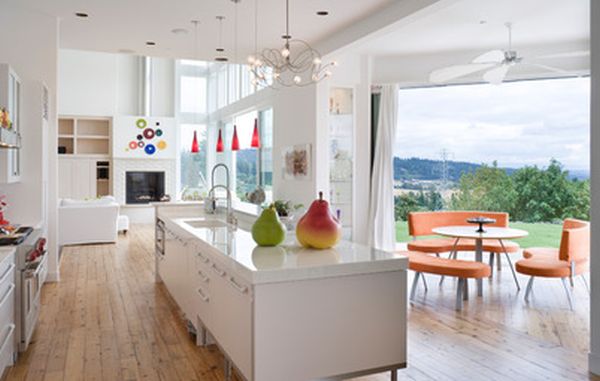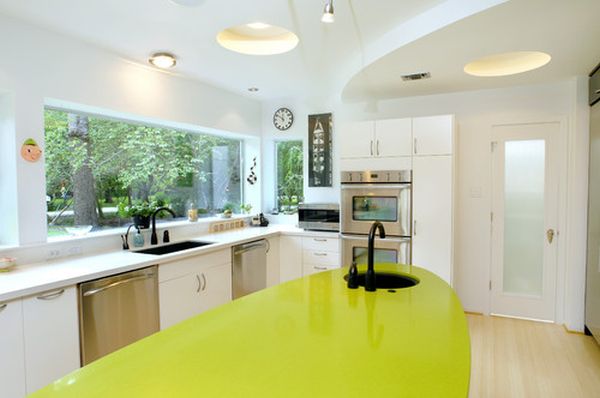Many might not consider it, but the concept of a kitchen is in itself green. Kitchens reduce waste by keeping food preparation at home, and curtailing the costs involved in public meal preparation and of course, transportation. The kitchen of an haute dining establishment is going to leave a hundred times the footprint that yours will. By buying and preparing your food at home, you’re already making great strides toward getting your kitchen green.

Once you’ve established this pattern, it then makes sense to start upgrading appliances, fixtures, and whatever else needs work. While older properties may not seem initially green, keep in mind that maintaining a pre-built structure will cost less and damage the environment less than getting rid of that old structure and building something over it. So don’t fret if you’ve got an older residence; this means you’re already taking great strides toward reducing your impact on the environment.
Going green may require a kitchen remodel
Think about your kitchen’s garbage. Is it a discriminating trash can? Are things which can be recycled being recycled? Or are they being thrown in with biological waste like orange peel and egg shells? How about your appliances? Is your fridge energy-star rated? Is your dishwasher an achiever of government standards when it comes to energy? How about your sink; do you have a foot-pedal? According to the Washington Post, getting a foot pedal installed in your sink isn’t just eco-friendly; it’s also a very practical step. The point is if you want to have a green kitchen, you’re going to have to do some things to remodel. In newer homes, remodeling could be as simple as introducing a recycling system to the premises, or it could involve a floor-to-ceiling effort.
Older homes need more TLC

With age comes entropic breakdown in addition to stylistic redundancy. 2016 isn’t the year where afros, shag carpet, and bob haircuts are all something you can find at a roller-skating bar. Likewise, wallpaper patterns, tile configurations, and kitchen fixtures will all eventually be out of vogue. As society becomes more ecologically-centered, such fixtures may very well be harmful to the environment as well. To avoid this, it makes sense to find contemporary kitchen fixtures which do the job of the old fixtures just as well, but have a decreased impact on the environment. The idea is to get the same amount of utility without leaving as large of a footprint. There are a lot of sinks that make this possible.
One of the more recommendable items that an older home likely won’t have, but that can help conserve water, is a spray nozzle attached to a hose. If you’ve already got the foot pedal, then you’ll be doubly conserving your resources. Whereas before, you’d have to hold the dish under the water and then leave the tap running while you grabbed another one, with the pedal and nozzle you can have water on-demand in exactly the quantities you require while simultaneously curtailing unnecessary water expenditure, culling the cost of your monthly utilities bill and helping preserve the environment in one fell stroke.
The same kind of kitchen faucet fixtures can be installed in the bathroom sinks, too. Maybe the hose and nozzle is a bit much for this area of the house, but a foot pedal available in the morning for brushing teeth, or for washing hands, is sure to save time and money. Generally, as you go throughout your property, it’s a good idea to monitor the plumbing and see what can be upgraded. The cost of upgrading may be remunerated by the ensuing savings.
Article Submitted By Community Writer


